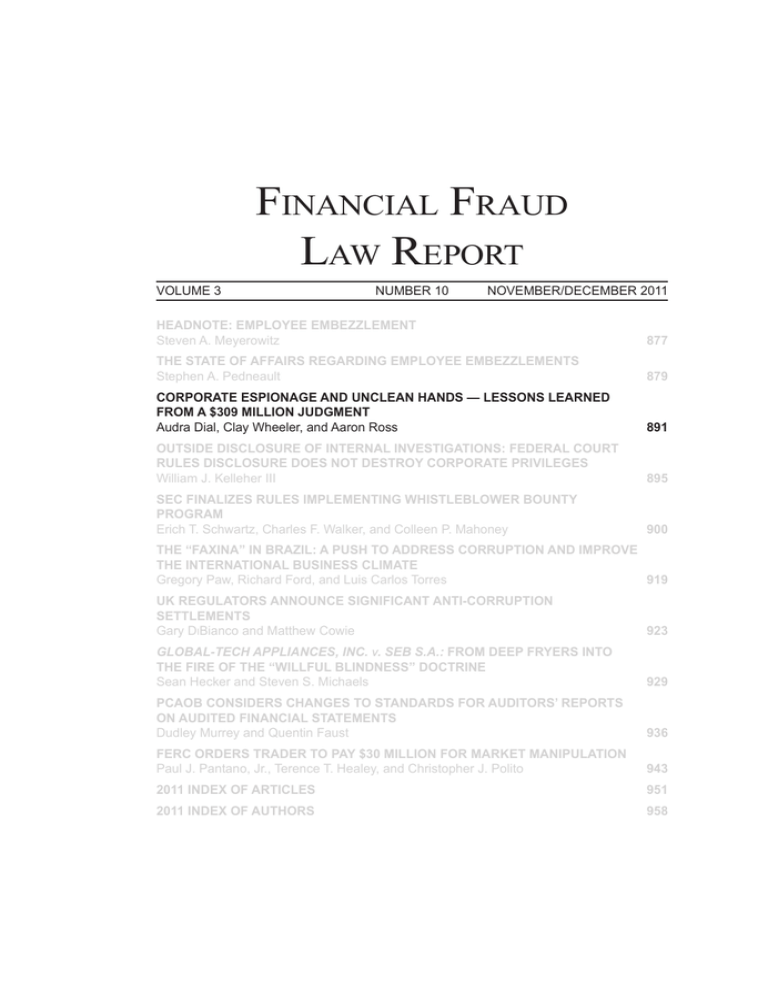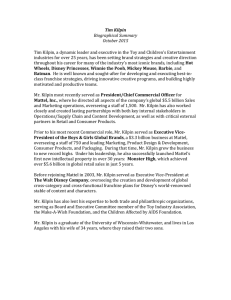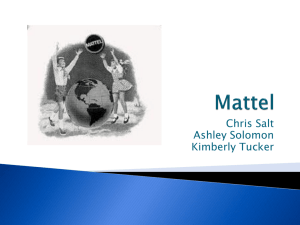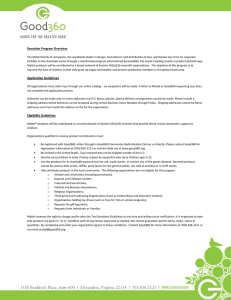
Financial Fraud
Law Report
VOLUME 3
NUMBER 10
NOVEMBER/DECEMBER 2011
HEADNOTE: EMPLOYEE EMBEZZLEMENT
Steven A. Meyerowitz
877
THE STATE OF AFFAIRS REGARDING EMPLOYEE EMBEZZLEMENTS
Stephen A. Pedneault
879
CORPORATE ESPIONAGE AND UNCLEAN HANDS — LESSONS LEARNED
FROM A $309 MILLION JUDGMENT
Audra Dial, Clay Wheeler, and Aaron Ross
891
OUTSIDE DISCLOSURE OF INTERNAL INVESTIGATIONS: FEDERAL COURT
RULES DISCLOSURE DOES NOT DESTROY CORPORATE PRIVILEGES
William J. Kelleher III
895
SEC FINALIZES RULES IMPLEMENTING WHISTLEBLOWER BOUNTY
PROGRAM
Erich T. Schwartz, Charles F. Walker, and Colleen P. Mahoney 900
THE “FAXINA” IN BRAZIL: A PUSH TO ADDRESS CORRUPTION AND IMPROVE
THE INTERNATIONAL BUSINESS CLIMATE
Gregory Paw, Richard Ford, and Luis Carlos Torres
919
UK REGULATORS ANNOUNCE SIGNIFICANT ANTI-CORRUPTION
SETTLEMENTS
Gary DiBianco and Matthew Cowie
923
GLOBAL-TECH APPLIANCES, INC. v. SEB S.A.: FROM DEEP FRYERS INTO
THE FIRE OF THE “WILLFUL BLINDNESS” DOCTRINE
Sean Hecker and Steven S. Michaels
929
PCAOB CONSIDERS CHANGES TO STANDARDS FOR AUDITORS’ REPORTS
ON AUDITED FINANCIAL STATEMENTS
Dudley Murrey and Quentin Faust
936
FERC ORDERS TRADER TO PAY $30 MILLION FOR MARKET MANIPULATION
Paul J. Pantano, Jr., Terence T. Healey, and Christopher J. Polito
943
2011 INDEX OF ARTICLES
951
2011 INDEX OF AUTHORS
958
EDITOR-IN-CHIEF
Steven A. Meyerowitz
President, Meyerowitz Communications Inc.
BOARD OF EDITORS
Frank W. Abagnale
Author, Lecturer, and Consultant
Abagnale and Associates
Robert E. Eggmann
Partner
Lathrop & Gage LLP
Frank C. Razzano
Partner
Pepper Hamilton LLP
Stephen L. Ascher
Partner
Jenner & Block LLP
Jeffrey T. Harfenist
Managing Director,
Disputes & Investigations
Navigant Consulting (PI) LLC
Bethany N. Schols
Member of the Firm
Dykema Gossett PLLC
Thomas C. Bogle
Partner
Dechert LLP
James M. Keneally
Partner
Kelley Drye & Warren LLP
Bruce E. Yannett
Partner
Debevoise & Plimpton
LLP
David J. Cook
Partner
Cook Collection Attorneys
The FINANCIAL FRAUD LAW REPORT is published 10 times per year by A.S. Pratt & Sons, 805 Fifteenth
Street, NW., Third Floor, Washington, DC 20005-2207, Copyright © 2011 THOMPSON MEDIA GROUP LLC.
All rights reserved. No part of this journal may be reproduced in any form — by microfilm, xerography, or
otherwise — or incorporated into any information retrieval system without the written permission of the copyright owner. For permission to photocopy or use material electronically from the Financial Fraud Law Report,
please access www.copyright.com or contact the Copyright Clearance Center, Inc. (CCC), 222 Rosewood Drive,
Danvers, MA 01923, 978-750-8400. CCC is a not-for-profit organization that provides licenses and registration for a variety of users. For subscription information and customer service, call 1-800-572-2797. Direct any
editorial inquires and send any material for publication to Steven A. Meyerowitz, Editor-in-Chief, Meyerowitz
Communications Inc., PO Box 7080, Miller Place, NY 11764, smeyerow@optonline.net, 631.331.3908 (phone)
/ 631.331.3664 (fax). Material for publication is welcomed — articles, decisions, or other items of interest. This
publication is designed to be accurate and authoritative, but neither the publisher nor the authors are rendering
legal, accounting, or other professional services in this publication. If legal or other expert advice is desired, retain
the services of an appropriate professional. The articles and columns reflect only the present considerations and
views of the authors and do not necessarily reflect those of the firms or organizations with which they are affiliated, any of the former or present clients of the authors or their firms or organizations, or the editors or publisher.
POSTMASTER: Send address changes to the Financial Fraud Law Report, A.S. Pratt & Sons, 805 Fifteenth
Street, NW., Third Floor, Washington, DC 20005-2207. ISSN 1936-5586
Corporate Espionage and Unclean
Hands — Lessons Learned from a $309
Million Judgment
AUDRA DIAL, CLAY WHEELER, AND AARON ROSS
The authors discuss a recent court decision that found that Mattel had
willfully and maliciously misappropriated 26 categories of trade secret
information of its rival MGA Entertainment. The $309 million judgment
against Mattel provides important lessons not only on trade secret protection but also on early case assessment.
T
he recent $309 million judgment against the world’s largest toy
company, Mattel, Inc., is yet another cautionary tale of corporate
espionage and provides lessons for both plaintiffs and defendants
alike. A California judge entered a $309 million judgment after a California jury found Mattel willfully and maliciously misappropriated 26 categories of trade secret information of its rival MGA Entertainment.1 The
judgment included $85 million in compensatory damages, $2.5 million
in attorneys’ fees and costs relating to MGA’s trade secret claims and a
whopping $137 million in attorneys’ fees and costs relating to MGA’s successful defense against Mattel’s copyright claims. This $309 million judgment against the original plaintiff provides important lessons not only on
trade secret protection but also on early case assessment.
Audra Dial is a partner at Kilpatrick Townsend & Stockton LLP, where she is a member of the Patent Litigation team. Clay Wheeler is a partner in the firm’s Complex
Business Litigation and White Collar Crime and Special Investigations teams. Aaron
Ross is an associate at the firm concentrating his practice on complex business litigation. The authors may be reached at adial@kilpatricktownsend.com, cwheeler@
kilpatricktownsend.com, and aross@kilpatricktownsend.com, respectively.
891
Published by A.S. Pratt in the November/December 2011 issue of the Financial Fraud Law Report
Copyright © 2011 THOMPSON MEDIA GROUP LLC. 1-800-572-2797.
FINANCIAL FRAUD LAW REPORT
BACKGROUND
In 2001, MGA introduced Bratz, a line of trendy, pouty-lipped dolls.
Bratz instantly became a runaway hit among older girls (ages 9 to 11)
and deeply cut into the sales of Mattel’s Barbie dolls, which had led the
fashion-doll market since 1959.
In 2004, Mattel sued its former employee who created Bratz and was
currently employed by MGA, alleging that he conceived of the idea for
Bratz while still employed with Mattel and therefore breached his obligations to Mattel when he launched Bratz with MGA. Mattel also sued MGA
for copyright infringement, claiming entitlement to the idea of the Bratz
concept. In 2008, the jury found MGA liable for copyright infringement
and awarded Mattel approximately $100 million in damages and shortly
thereafter, the court enjoined MGA from producing or marketing virtually
every Bratz doll. In 2010, however, the Ninth Circuit reversed the judgment and injunction.
During discovery, MGA learned that Mattel had engaged in a scheme
of corporate espionage aimed at damaging its serious competitor in the
fashion doll market. Upon discovering these tactics, MGA alleged that
Mattel employees had:
•
Infiltrated confidential competitor showrooms in order to get an illicit
preview of new Bratz products before they hit the market so that Mattel could imitate or copy them;
•
Rearranged Barbie/Bratz displays at key retailers to disadvantage
Bratz;
•
Priced products below cost to block Bratz’s access to the market;
•
Intimidated and threatened licensees, retailers, and suppliers with loss
of Mattel business if they dealt with MGA; and
•
Paid retailers around the world not to buy Bratz or MGA products.
THE VERDICT AND JUDGMENT AGAINST MATTEL
892
In April 2011, a federal jury sided with MGA, rejecting Mattel’s claims
CORPORATE ESPIONAGE AND UNCLEAN HANDS
and awarding MGA damages. MGA then moved for exemplary damages
including attorneys’ fees and costs.
On August 4, 2011, Judge David O. Carter ruled that “Mattel’s conduct fell far short of basic ethical standards” in its dealings with MGA:
For years, the company’s senior management encouraged employees to use false pretenses to access competitors’ private displays at
international toy fairs and improperly acquire competitive information, including price lists, advertising plans, and unreleased product
attributes. Mattel disseminated the improperly acquired information through internal memoranda, and company-wide presentations;
praised the employees that committed the wrongdoing; used MGA’s
trade secret information to preempt MGA’s unreleased products, and
reaped $85 million in unjust enrichment. These “market intelligence”
tactics were intentional, pervasive, long-standing, and egregious.
Although the court described the conduct as “egregious,” it did “not represent the most reprehensible form of trade secret misappropriation imaginable.” Likening Mattel’s use of cheap fake business cards and silly nicknames to “amateurish tactics,” the court awarded MGA $85 million, which
equaled the jury’s compensatory damages award to MGA.
As for attorneys’ fees and costs, in addition to awarding MGA the
$2.5 million in attorneys’ fees and costs it incurred in litigating its counterclaims against Mattel, the court awarded MGA $137 million for the
attorneys’ fees and costs incurred in successfully defending against Mattel’s copyright claims pursuant to 17 U.S.C. § 505. According to the court,
“Mattel asserted a copyright claim that was stunning in scope and unreasonable in the relief it requested. The claim imperiled free expression,
competition, and the only serious competitor Mattel had faced in the fashion doll market in nearly 50 years.”
PRACTICAL IMPLICATIONS
The Mattel case involves a classic case of corporate espionage. The case
thus presents several important lessons for plaintiffs and defendants alike.
893
FINANCIAL FRAUD LAW REPORT
Take Preventative Measures or Early Action
Corporate espionage takes many forms (some “amateurish” and some
extremely sophisticated). Thus, companies must first take precautions to
protect their trade secret, proprietary, and other confidential business information before it is too late. This includes being aware of third parties
with whom one is dealing so that there is a clear understanding of their
motivation and intention before confidential and proprietary information
is disclosed.
Provide Employee Training
Companies should educate employees on the appropriate bounds for seeking competitive intelligence and what conduct may cross the line. While
sneaking into a trade show using a fake business card and false identity
may amount to what the court described as “amateurish tactics,” these
tactics nevertheless may be illegal and carry a stiff punishment.
Engage in a Thorough Case Assessment Before Filing Suit
Doing so will enable an analysis of the potential claims that could
be raised in response to the allegations presented in a complaint. In this
instance, if Mattel had not aggressively pursued its trade secret and copyright claims against MGA and its former employee in the first instance,
Mattel’s trade secret misuse may not have come to light. Nevertheless,
owners of confidential and trade secret information must vigorously protect their information to avoid waiving the ability to protect that information in the future. Thus, it is important to maintain clean hands in dealings
with competitors so there is no hesitation when it comes time to act to
protect confidential and trade secret information.
NOTE
See Mattel, Inc. et al. v. MGA Entm’t, Inc. et al., No. 2:04CV09049DOC-RNB (C.D. Cal. Aug. 4, 2011); MGA Entm’t, Inc. v. Mattel, Inc., No.
2:11CV01063-DOC-RNB (C.D. Cal. Feb. 3, 2011).
1
894






